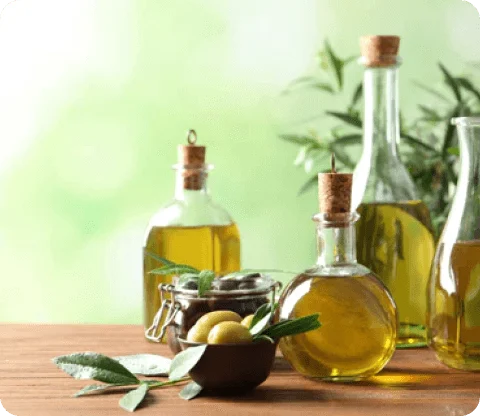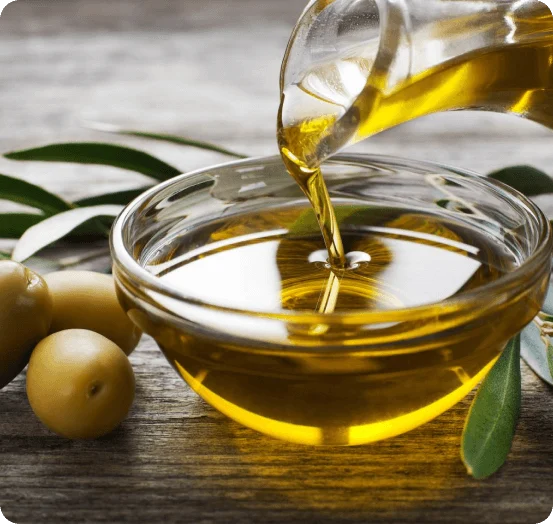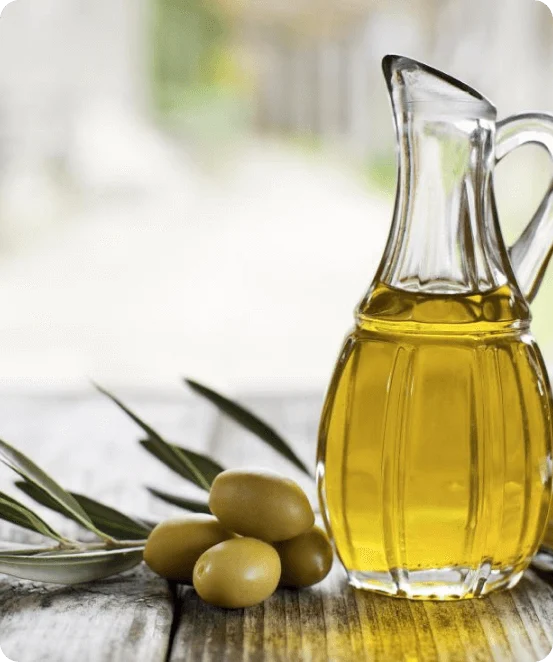Extra Virgin Olive Oil
 First off you may be asking yourself what is Extra Virgin Olive Oil?
First off you may be asking yourself what is Extra Virgin Olive Oil?
Is the price worth it?
And What makes it different from Virgin Olive Oil or regular Olive Oil?
Olive Oil, also known as liquid gold, can be seen in many kitchens around the world. It can be cooked with, baked with, seasoned with, drizzled with, and yes even used as a topical ointment for your skin. Extra virgin olive oil contains vitamin E (an antioxidant vitamin that can help strengthen the immune system, and reduce risk of heart disease and some forms of cancer), Essential Fatty Acids ( that can stave off heart disease, obesity, and diabetes), Chlorophyll (a substance that has antioxidant properties), Polyphenols (a substance that acts as antioxidants), Phytoestrogens (substances that help beat bone loss and minimize
the pesky symptoms of menopause), and Sterols (substances that counter the intestinal absorption of cholesterol in foods). It has been used as a healing remedy in many religions and cultures throughout the world. So if this stuff is so amazing why does it need to be Extra amazing?
Most people don’t know that there are 6 classifications, or types, of olive oil. At the top you have extra virgin olive oil which is the cream of the crop. It is the most flavorful, contains the most health benefits for you, and yes, it is more expensive than other olive oils. Too much of the olive oil bought off the shelf at the grocery store isn’t the real deal. In order to be considered extra virgin the oil must adhere to a strict set of rules and regulations set in place by the International Olive Council. Some of the most important contributors to that title are listed below:

- Fresh Pressed Olive oil is basically fresh pressed fruit juice. The olives are harvested by hand or with a machine and then rushed to the mill to be pressed within 24 hours of their picking. No fallen olives are allowed to be used in this pressing.
- No Chemicals or heat can be used during the pressing of the olive oil. Extra virgin olive oil must be extracted from healthy and fresh olives without the use of heat or chemicals, hence the term “cold-pressed” is used when describing the process of making Extra virgin olive oil.
- Zero taste defects can be associated with extra virgin olive oil. There are a number of negative sensory defects that can occur during the growth, harvesting, processing, and storage of olive oil. Some of the sensory shortcomings that can be found are: the oil can be musty, rancid, or unclear. As well as the use of dark glass bottles to protect the oil from exposure to light.
- The acidity level is tested by a third-party laboratory that measures the oil and its chemical characteristics. These labs run chemical tests using a variety of parameters to determine the oil quality. Extra virgin olive oil must have an acidity level, known as oleic acid, less than .8% which is the lowest of all olive oils.
Now you know a little more about extra virgin olive oil, but what about the other 5 types of olive oil and how can you make the best choice?

- Virgin Olive Oil is the next best which is also an unrefined oil. Like extra virgin olive oil it comes from the first pressing without heat or chemicals used and also contains some polyphenols. It has a slightly lower flavor intensity and has an oleic acidity level of up to 2% which increases it’s calorie level as well as its smoke point.
- Refined Olive Oil is made by further refining virgin olive oil. It does not have the antioxidant benefits of extra virgin and virgin olive oil.
- Olive Oil Or Pure/Classic Olive Oil don’t get misled by the terms “pure” or “classic” when purchasing. This oil is actually a blend of refined and virgin olive oils. Pure refers to the fact that it has not been mixed with other types of oils. The flavor, aroma, and antioxidant levels depend on the amount of virgin oil in it.
- Lite/Light Olive Oil light is a reference to the amount of flavor in the oil and not the calories. Since this variety is basically a mix of refined olive oil and other vegetable oils, it has none of the nutritional values of antioxidants that give olive oil its unique character.
- Olive-Pomace Oil The pomace is that part of the olive which remains after all the oil and water in it has been removed by pressuring or centrifuging processes. This oil is extracted using solvents and then refined, rendering it neutral in taste and color. Pomace oil is the lowest grade of olive-based oils. Olive-pomace oil is inexpensive and doesn’t have the vitamins or polyphenols like virgin olive oil. Olive-pomace oil is best avoided. It has been found to have carcinogenic contaminants like polycyclic aromatic hydrocarbons in high amounts.
